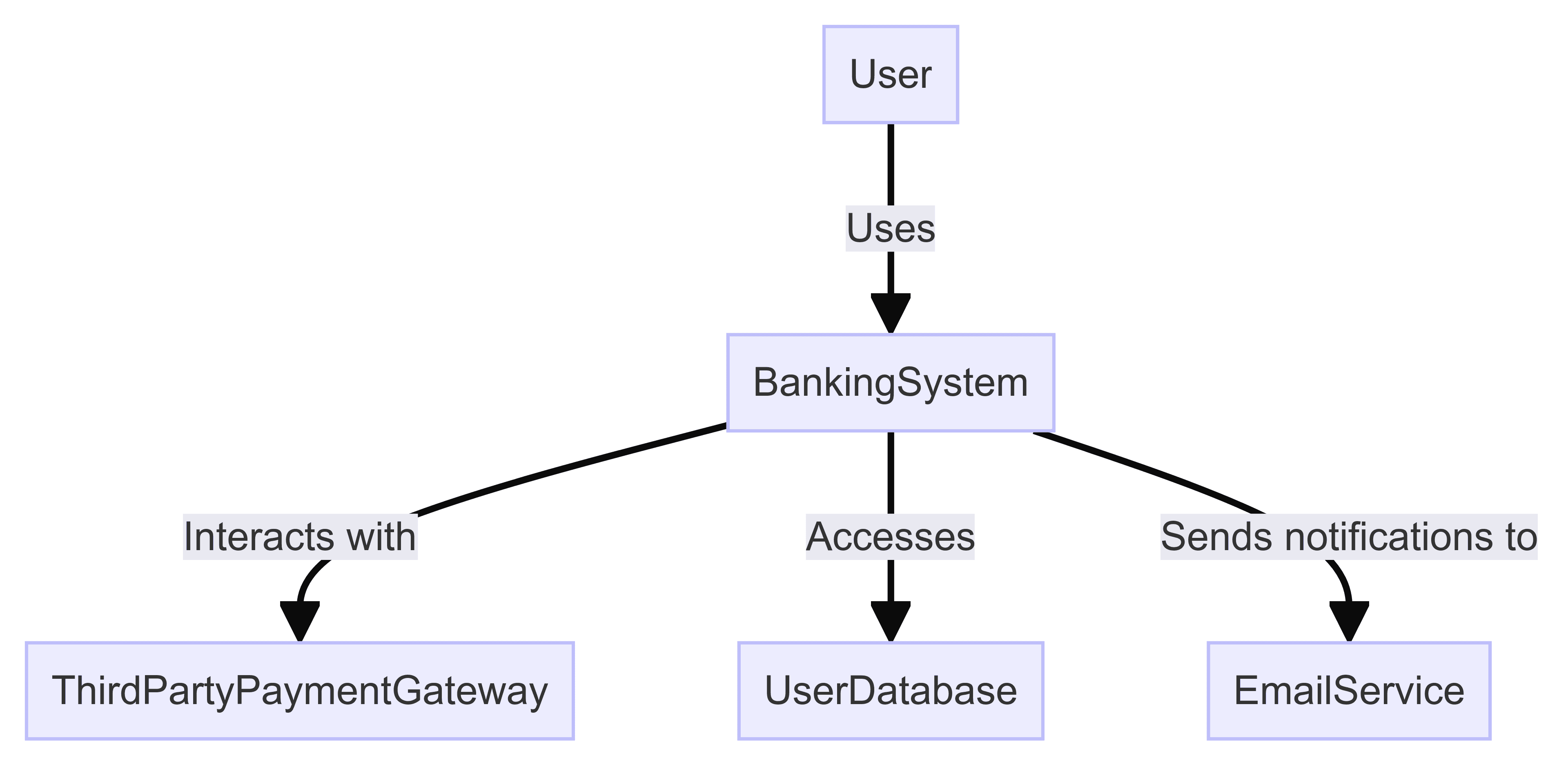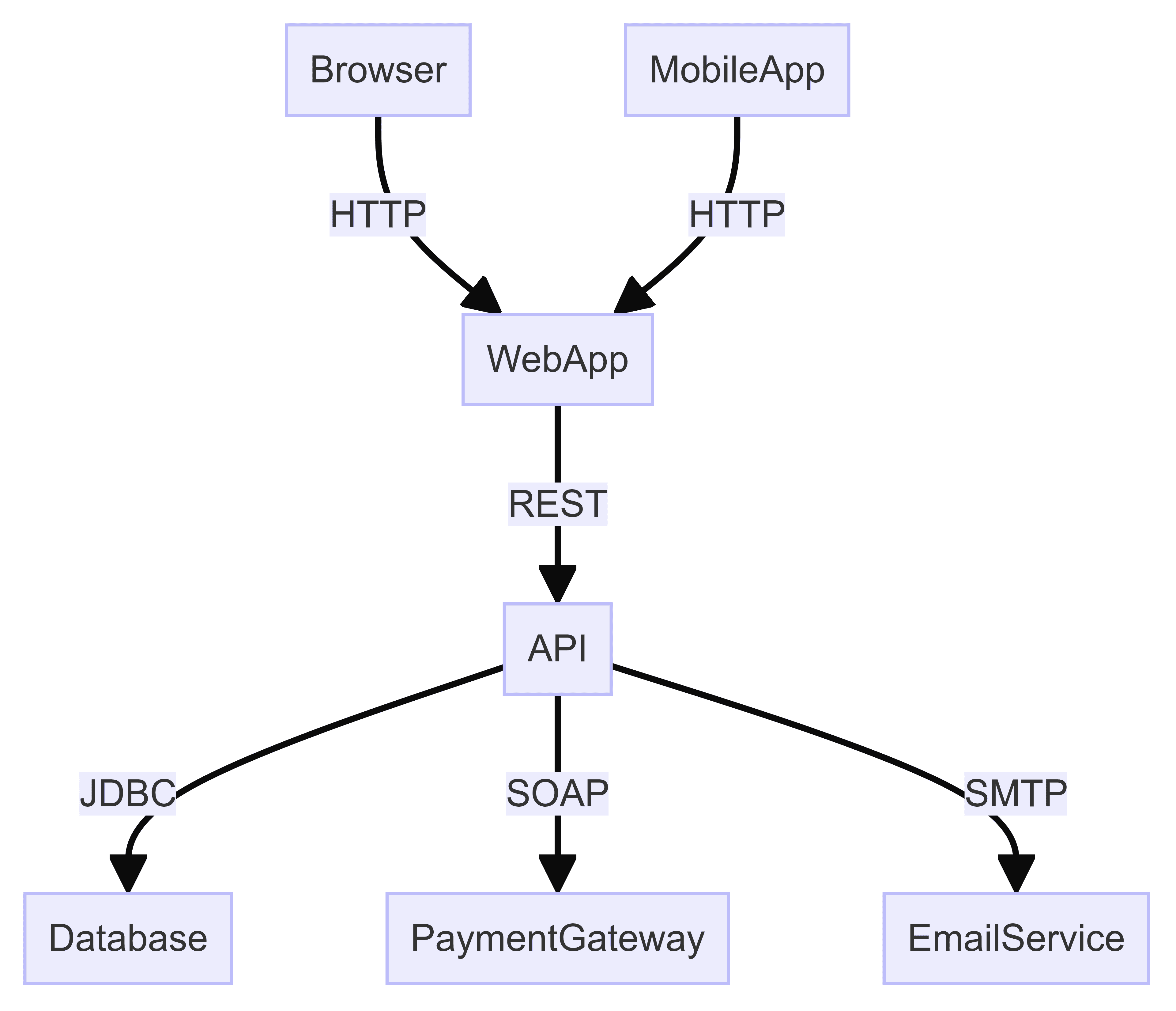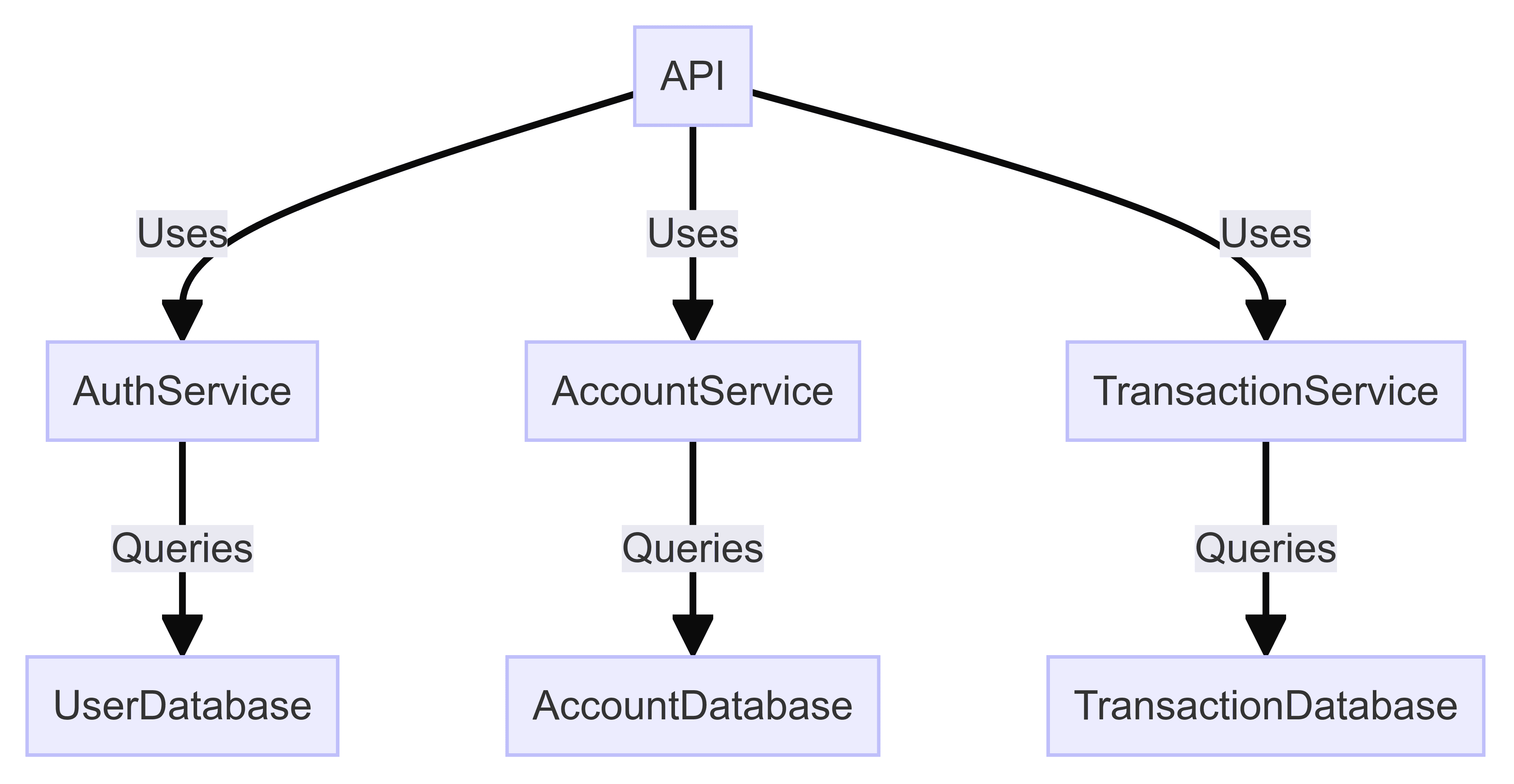1. Introduction
Visualizing software architecture is crucial for understanding, designing, and communicating the structure and dynamics of a software system. Simon Brown’s C4 model is a framework that allows us to visualize the architecture of software systems in a clear and structured manner. It provides different levels of abstraction to help various stakeholders understand the architecture from their perspective.
In this tutorial, we’ll explore the C4 model and its components and provide examples to illustrate its usage.
2. What Is the C4 Model?
The C4 model breaks down software architecture into four levels of abstraction:
- Context: provides a high-level view of the system and its interactions with external entities
- Container: zooms in to show the major containers (applications and services) that comprise the system
- Component: details the components within each container
- Code: shows the implementation details of individual components (optional)
These levels help understand and communicate different aspects of the software architecture to different stakeholders.
3. The Context Diagram
Let’s first discuss the context diagram. This is where we get a bird’s-eye view of our system and see how it interacts with the world. It’s perfect for explaining the big picture to non-technical users.
Let’s say we’re building an online banking system. Our context diagram might look something like this:
In this setup:
- The User uses our BankingSystem
- Our BankingSystem interacts with a ThirdPartyPaymentGateway
- It also accesses a UserDatabase
- And sends out notifications via an Email**Service
The context diagram provides a simple, high-level view of the system and its interactions, which is perfect for explaining the system to non-techies.
It also helps us define the boundaries and relationships of our system.
4. The Container Diagram
Next up is the container diagram at the container level of abstraction. Here, we zoom in to see the major containers, such as apps, services, and databases. This view is for the clients who must understand the architecture and deployment.
Let’s come back to our example with an online banking system:

Here’s what’s happening:
- Our main web application is accessed by browsers and mobile apps/devices
- API is the backend service the web app talks to
- A database is where all the user and transaction data is stored
- PaymentGateway handles the payment processing
- EmailService sends out notifications
The container diagram helps us see how the system is set up and how it works with other systems. It’s useful for technical talks and decisions because it explains how a system is put together and its main parts.
5. The Component Diagram
Now, let’s zoom in even further with the component diagram. This one breaks down each container to show its internal components and their interactions. It’s ideal for developers and architects who need to understand the nitty-gritty details:

The diagram helps us better understand what’s inside each container by showing what each part is responsible for.
Component diagrams are handy for developers working on the code and keeping things running smoothly, especially when onboarding new team members.
6. The Code Diagram
Finally, we have the code diagram. This abstraction level is optional and shows the implementation details of individual components, like classes and methods. It’s aimed at developers who need to dive deep into the code.
In our example, we kept it a bit simpler, but we can always extend it with more info about all required classes and dependencies:

In the diagram above, we specified the security implementation details of AuthService and how it interacts with UserRepository.
7. Comparing the C4 Model with Other Models
We can use several models and frameworks to visualize software architecture. Each has strengths and weaknesses, and choosing which to use often depends on the project’s specific needs and the stakeholders involved.
Here, we’ll compare the C4 model with two other popular models: UML (Unified Modeling Language) and the 4+1 View Model.
7.1. UML (Unified Modeling Language)
UML is one of the most widely used modeling languages for software architecture.
It provides a variety of diagram types to represent different aspects of the system, such as class diagrams, sequence diagrams, use case diagrams, and more.
7.2. 4+1 View Model
Philippe Kruchten introduced the 4+1 View Model, which organizes architecture into five views: logical, development, process, physical, and scenarios (use cases).
This model aims to address the concerns of different stakeholders by providing multiple perspectives on the system.
7.3. Comparison Summary
For example, using the C4 model for high-level architecture visualization and UML for detailed design can provide the best of both worlds. The key is to tailor the approach to the specific needs of the project and stakeholders:
Aspect
C4 Model
UML
4+1 View Model
Focus
Simplicity and clarity
Comprehensive detail
Multiple perspectives
Diagram Types
Four main types (Context, Container, Component, Code)
Wide range of types (class, sequence, use case, etc.)
Five views (logical, development, process, physical, scenarios)
Stakeholder Suitability
Non-technical and technical stakeholders
Primarily technical stakeholders
Both technical and non-technical stakeholders
Ease of Adoption
Easy to adopt and use
Requires understanding of UML notation
It can be complex to maintain
Scalability
Scales well for various project sizes
Detailed but can become overwhelming
Comprehensive but can be challenging to manage
Use Case Examples
High-level architecture, iterative documentation
Detailed design, formal documentation
In-depth architecture, detailed analysis
So, in some cases, it may be beneficial to integrate aspects of different models.
8. Tools for Creating C4 Diagrams
With the right tools, we can create C4 diagrams in a breeze. Let’s explore some popular options that can help us efficiently create and manage these diagrams.
8.1. Structurizr
First, we have Structurizr, an online tool designed specifically for the C4 model. This tool is built with the C4 model in mind, ensuring that all diagrams align perfectly with the model’s principles.
What’s great about Structurizr is its support for collaborative editing, which allows teams to work together on diagrams in real time. Plus, it integrates smoothly with various development tools and repositories, making it easy to keep your architecture diagrams up-to-date with code changes.
8.2. Lucidchart
Next, let’s talk about Lucidchart. This versatile diagramming tool supports a variety of diagram types, including C4. It offers an intuitive drag-and-drop interface, making it easy to create diagrams.
Lucidchart also has many templates and shapes tailored for different diagram types, including those needed for the C4 model. One of its standout features is real-time collaboration, including comments and version control, which is perfect for team projects.
8.3. Draw.io
Another fantastic tool is Draw.io, also known as diagrams.net. This open-source tool integrates well with platforms like Confluence and GitHub, making it a cost-effective and flexible choice.
Draw.io is completely free to use and offers various diagram types, making it versatile enough for any project. Its seamless integration with popular tools lets us easily include diagrams in our existing workflows.
8.4. PlantUML
If we prefer a text-based approach, PlantUML might be just what we need. It allows us to define diagrams using a simple and intuitive language and supports C4 model diagrams through extensions.
This tool is excellent for those who like to keep things under version control, as diagrams are created from text and can be easily managed alongside our code.
Additionally, PlantUML can generate diagrams automatically from code or other text descriptions, adding an extra convenience layer.
8.5. Microsoft Visio
For those who need a more professional touch, Microsoft Visio is a solid choice.
Known for creating high-quality, professional diagrams, Visio is highly customizable and can be tailored to create C4 model diagrams. It integrates well with other Microsoft Office tools.
8.6. Additional Tools and Resources
There are also a few additional tools worth mentioning.
- C4-PlantUML is an extension for PlantUML specifically for C4 diagrams.
- Modelio is another open-source modeling environment that supports UML and can be adapted for C4.
- Graphviz is a graph visualization software that can be used to create various types of diagrams, including C4, focusing on relationships.
8.7. Choosing the Right Tool
Choosing the right tool for creating C4 diagrams depends on several factors.
We should consider how user-friendly the tool is and whether it requires extensive training. Does it support real-time collaboration and version control? Integration with our existing tools and workflows is also crucial. And, of course, the cost is always a factor – is the tool free, open-source, or does it require a subscription?
By evaluating these factors, we can choose the tool that best fits our team’s needs and workflow:
Tool
Best For
Key Features
Structurizr
C4-specific features
Supports C4 model, integration with code
Lucidchart
Versatility and ease of use
Intuitive interface, collaborative features
Draw.io
Cost-effectiveness
Free to use, integrates with various platforms
PlantUML
Text-based approach
Simple syntax, version control friendly
Microsoft Visio
Professional quality
Advanced features, enterprise integration
Whether we opt for Structurizr for its C4-specific features, Lucidchart for its versatility and ease of use, Draw.io for its cost-effectiveness, PlantUML for its text-based approach, or Microsoft Visio for its professional quality, there’s a tool out there to help us create clear and effective C4 diagrams.
We should choose the tool that fits our team’s needs and workflow based on the scenarios above.
9. Conclusion
In this article, we explored the C4 model for visualizing software architecture, highlighting its simplicity and clarity through Context, Container, Component, and Code diagrams.
The C4 model stands out for its ease of use compared to UML and the 4+1 View Model, making it an excellent choice for clear and concise architectural representation.
Integrating the C4 model into our processes allows us to design, communicate, and maintain complex systems more effectively.